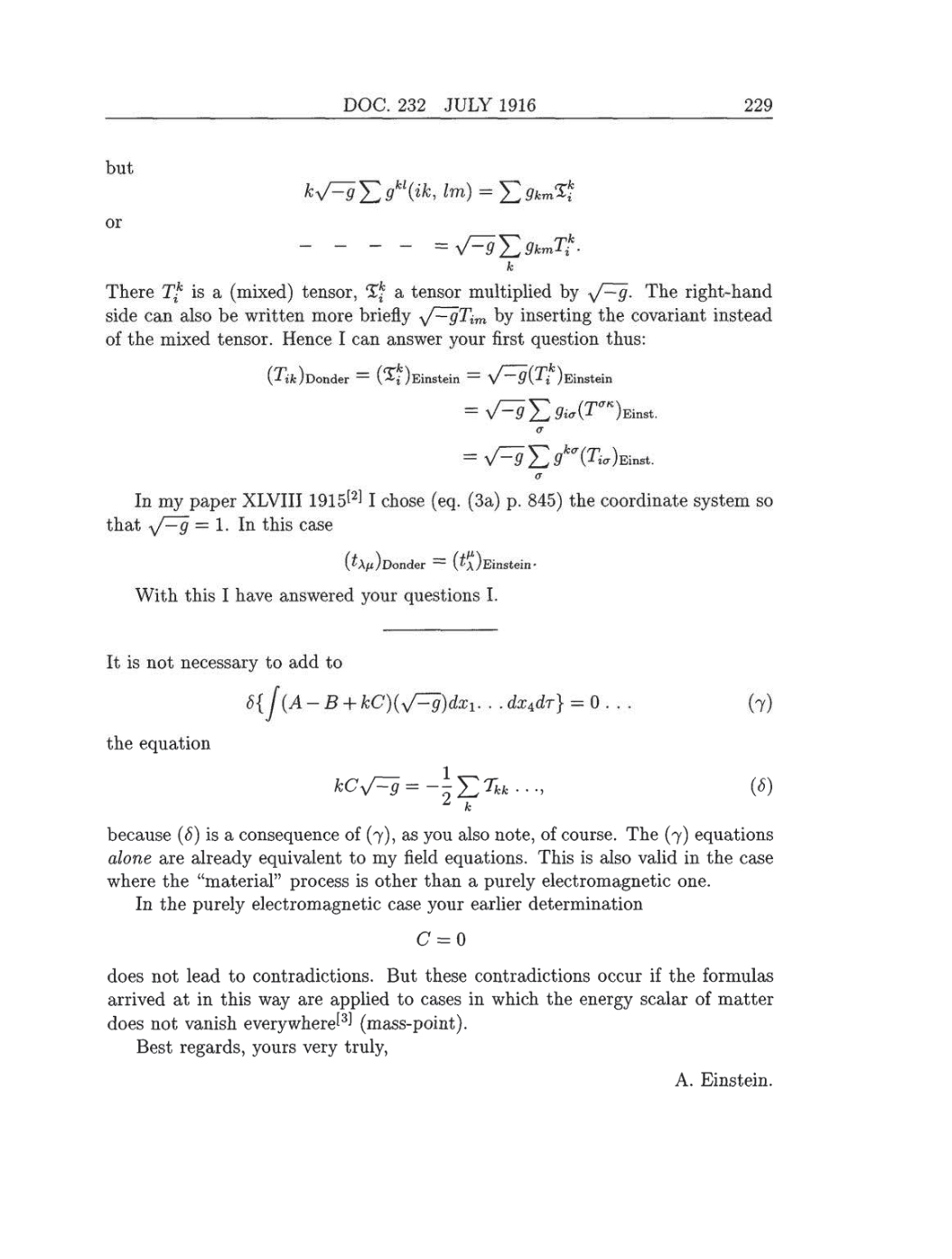DOC.
232
JULY
1916 229
but
or
kV^Yls^^k,
Im)
=
Y,9km^i
- - - -
=
V^Y.SkmTi.
There
Tki
is
a (mixed)
tensor,
Iki
a
tensor
multiplied by
V-g. The
right-hand
side
can
also be
written
more
briefly V-gTim by inserting
the
covariant
instead
of
the
mixed
tensor.
Hence
I
can answer
your
first
question
thus:
(Tik)Donder
=
(Iki)Einstein
=
V-g(Tki)Einstein
=
V-9E9íoT™)Einst.
a
=
V~g
T.Skr(Tia)Einst.
cr
In
my paper
XLVIII
1915[2]
I
chose
(eq.
(3a)
p. 845)
the
coordinate
system so
that
V-g
=
1.
In
this
case
(tAu)Donder
=
(tuA)Einstein.
With this
I
have answered
your questions I.
It
is
not
necessary
to
add
to
d{
ƒ (A
-
B
+ kC)(yVg)dx1...
dx4dT}
=
0... (r)
the
equation
kCy/=g
=
-±£Tkk...,
(d)
z
k
because
(d)
is
a
consequence
of (r),
as
you
also
note,
of
course.
The
(r)
equations
alone
are
already equivalent
to
my
field
equations.
This
is
also valid in
the
case
where
the
“material”
process
is
other than
a purely electromagnetic one.
In
the
purely electromagnetic
case
your
earlier
determination
C
=
0
does not lead
to contradictions.
But
these contradictions
occur
if
the
formulas
arrived at in
this
way
are
applied
to
cases
in which
the
energy
scalar of matter
does not vanish
everywhere[3] (mass-point).
Best
regards, yours very
truly,
A.
Einstein.
